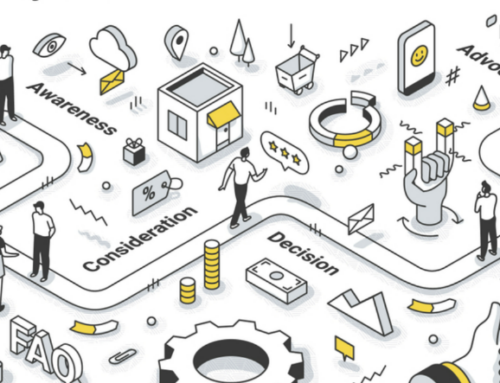About the author
Segmentation and recommender systems on digital banking channels promise increased sales as well as higher customer satisfaction.
The future is (finally) here: the ever-growing tech bubble consisting of more processing power, more data, and affordable processing and memory units finally made it possible for AI to show its full potential in everyday business.
Artificial intelligence has grown to be a must-have for every company striving to leverage business performances and optimize business processes. One particular niche of AI – machine learning, can be successfully implemented and utilized to get closer to the client and improve their experience.
The benefits of advanced analytics and machine learning have become very tangible:
- Personalization – understanding, rather than assuming customers preferences and needs, in order to determine the content, frequency, and channel to target them and nurture their customer journey
- Prioritization – identifying high-value customers and improving the decision-making process including time, resource, and budget allocation
- Performance – monitor and evaluate transitions and progress over time, in order to quantify how promoters and detractors are growing or shrinking through the time
- Predictiveness – the possibility to project and influence future customer behavior, based on their historical behavioral patterns, preferences, and habits
In this article, we will try to shed some light on how advanced analytics and machine learning can be used in banking, with the focus on segmentation and recommender systems, the most promising, and developed segments of AI for banks.
Proper Targeting with ML-Based Segmentation
Segmentation is one of the most popular use cases of machine learning applications. It is done by using clustering techniques that are based on a similarity measure, most often distance or density. In its essence, clustering represents a process of identifying groups/segments of similar instances. It is one of the unsupervised machine learning techniques, which means that the information of the group to which an instance of a dataset belongs is unknown prior to the application of the model. This makes clustering pretty convenient and powerful to be used as an asset.
Segmentation supported by Machine Learning can be used to identify segments of clients by their activity and engagement level, interest level, fitness level, spending habits, customer journey stage, occasion or timing frame, etc.
Analyzing client segments transitions over time makes tracking and stimulating the customer journey a lot easier. This includes uplifting the client from a lower to a higher-value segment and defining a proactive campaign to prevent degradation of the client from a high-value to a low-value segment, by using the early-warning system built on top of our segmentation model.
Personalize Your Offer with Recommender System
Recommender systems are customized engines used for creating personalized offers and tailor-made targeting. There are lots of different techniques that can be used for generating recommendations to the clients based on their preferences and similarities, from the vanilla recommenders (popularity based), to the content-based (analyzing the client history), collaborative filtering (analyzing both client history and similarities between clients to determine preferences), and hybrid engines (combining all previously mentioned approaches).
The idea behind the recommender engine is simple – it generates predictions indicating what the client would like to buy/try out in the future, based on the previous activity, preferences, and behavioral patterns of similar clients. This makes recommenders a good call for cross-sell campaigns.
Where to Start your AI Banking Journey?
As in all beginnings, relying on an experienced partner enables faster and more effective implementation. At Asseco, we have 15 years long experience in implementing digital banking solutions, with key SEE banks as a reference. Our Digital Banking portfolio is led by 2 key solutions: Digital Origination and Digital Edge.
Within our Digital Banking Product Portfolio, we have embedded custom-made segmentation models in order to better understand bank customers’ needs and preferences. The insights extracted from ML segmentation models are used for customizing the offer and determining targeting channels, frequency, and offer content.
Our products also include a custom-made recommender engine able to deal with both offline and online data. It is built to efficiently solve the famous “cold-start” problem (a situation where the client is new, or there is not enough information about the client, which often makes modeling preferences and generating recommendations impossible). On the other hand, it is capable of working with contextual features, which include modeling client habits and preferences over time. Besides the temporal component, our engine also uses different important factors for different client activities, which affect the final recommendation that is generated for each specific client. This makes the recommendation tailored for each client, based on the current intent, previous activity level, habits, and affinities.
Ready to kick off and spur your digitalization journey? Schedule a free session to learn more about our digital banking offering.
Worth reading:
Do you have (just) online channels or truly intelligent digital banking?
Conversational Banking – Will AI Disrupt the Way We Interact with Banks?







